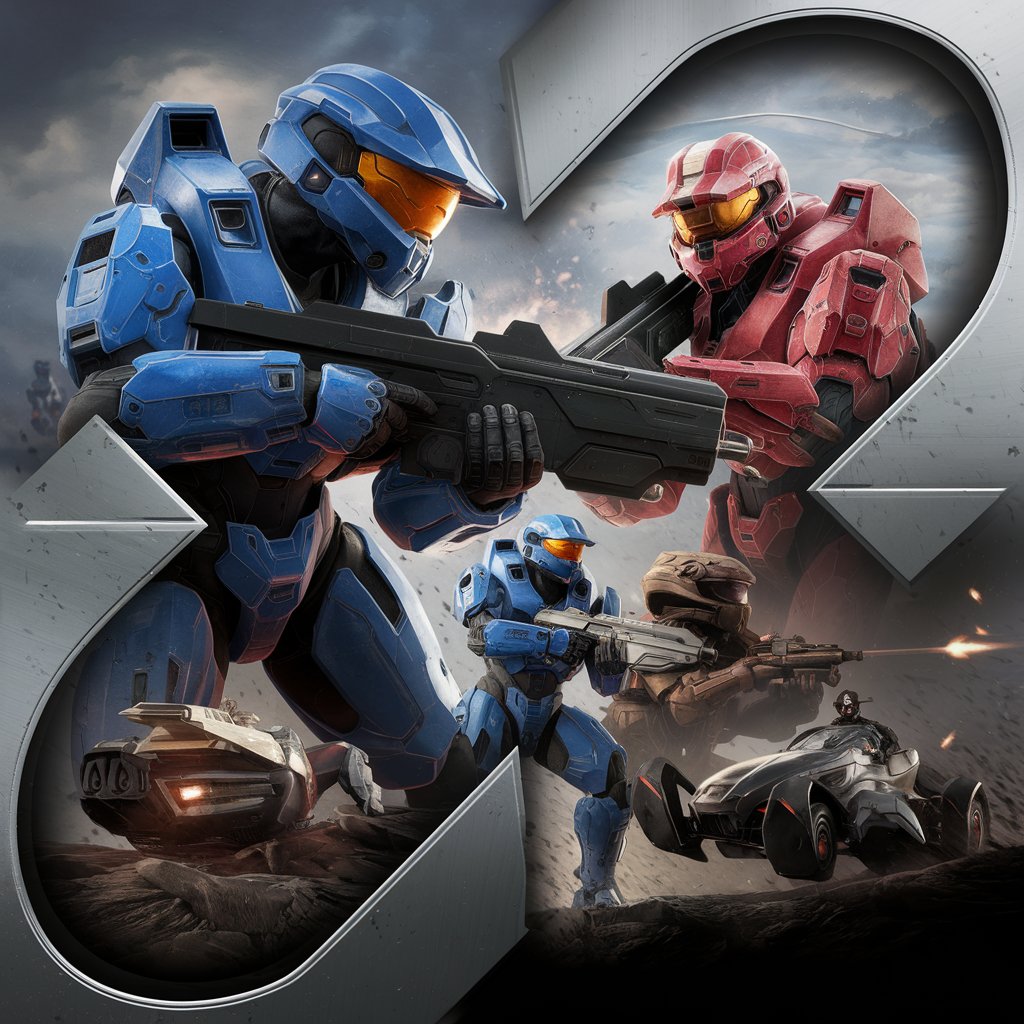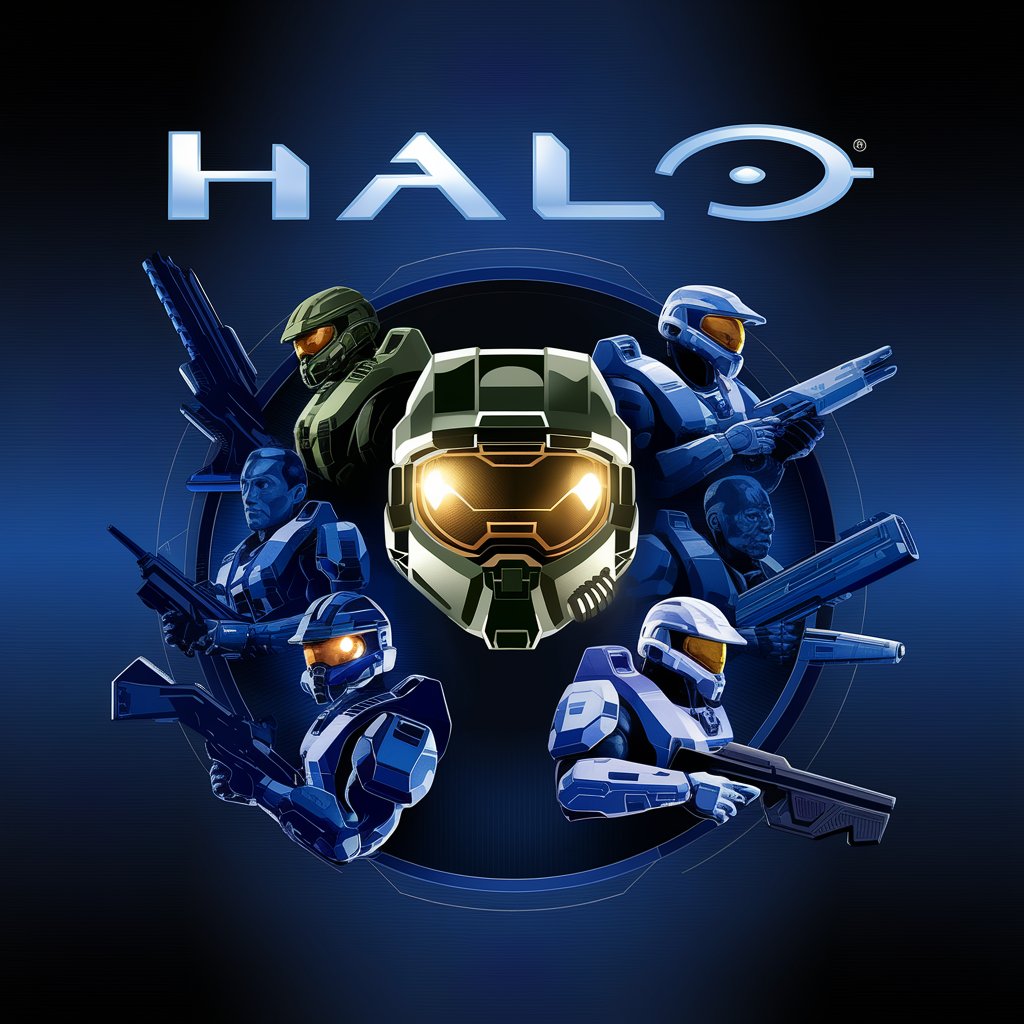Released in Halo (2003) game icons banners Combat Evolved became an iconic title that revolutionized gaming. But beyond its gameplay, the design elements particularly its icons and banners have had a lasting impact on the gaming community. This article delves into the evolution, design intricacies, and significance of Halo (2003) game icons banners.
The Role of Halo (2003) game icons banners
Icons and banners have always been vital in creating the visual identity of a game. In Halo (2003) game icons banners, they served as more than just decorative elements. They helped reinforce the futuristic, military sci-fi setting of the game. These designs have become as legendary as the game itself.
Design Language of Halo Icons and Banners
The icons and banners in Halo 2003 are known for their clean, futuristic look. They integrate sharp edges and metallic textures, reflecting the military tone of the game. The minimalist design reflects the high-tech nature of the UNSC (United Nations Space Command), creating a stark contrast with the organic designs of the Covenant.
Halo Icons: An Overview
Halo icons, including those for weapons, vehicles, and characters, are instantly recognizable. Each icon is designed to communicate its function quickly, with clear, bold shapes and minimal details. For example, the Spartan helmet icon has become synonymous with Master Chief, the game’s protagonist.
The Influence of Color Schemes
The color palette used in Halo (2003) game icons banners was essential in setting the tone. The icons and banners frequently use military greens, gunmetal grays, and dark blues. This color scheme effectively communicates a sense of urgency, danger, and combat.
Iconic Banners: Representing Teams and Factions
The banners in Halo 2003 were equally important. Each banner represented different factions, teams, or missions, and added depth to the game’s story. They were usually simple yet powerful, using symbols and emblems that resonated with fans.
UNSC Banner
The UNSC (United Nations Space Command) banner is a simple yet iconic design. It features the UNSC eagle emblem, representing strength and authority. This banner is always present during pivotal moments in the game, symbolizing humanity’s fight for survival.
Covenant Banner
In stark contrast, the Covenant banners are much more ornate. Featuring alien glyphs and symbols, they reflect the otherworldly and religious nature of this faction. The banners use a mix of purples and blues, symbolizing the mysterious and technologically advanced nature of the Covenant forces.

Impact of Icons and Banners on Multiplayer Modes
Icons and banners played a huge role in multiplayer modes. These visual cues helped players identify their teams and objectives more quickly. The simplicity and distinctiveness of each icon and banner ensured that players could immediately recognize vital information during fast-paced gameplay.
Red vs. Blue: A Legendary Rivalry
The iconic red and blue team banners became synonymous with Halo’s multiplayer modes. These banners were simple yet effective, symbolizing two opposing forces locked in eternal combat. The red and blue color scheme has since become a standard in many multiplayer games.
The Cultural Impact of Halo’s Visual Design
The visual design of Halo (2003) game icons banners has influenced not only future Halo titles but also the wider gaming industry. Game developers have often looked to Halo’s icons and banners as examples of simple, effective design. The Spartan helmet, in particular, has become one of the most recognizable icons in gaming history.
Merchandising and Fan Art
The influence of Halo’s icons and banners extended beyond the game. Fans have created countless pieces of fan art and merchandise inspired by the designs. T-shirts, posters, and even custom gaming setups often feature the Spartan helmet or UNSC banner. This cultural phenomenon shows the lasting impact of Halo (2003) game icons banners visual elements.
The Evolution of Halo Icons and Banners in Later Games
As the Halo series progressed, the icons and banners evolved, becoming more detailed and intricate. While later titles featured more advanced graphics and more complex designs, they always retained the simplicity and boldness that defined the original game’s aesthetic.
Halo 2 and Beyond
In Halo 2, the visual design took on a more polished look, with icons becoming sleeker and more defined. However, the essence of Halo 2003’s design language remained intact. The banners and emblems became more detailed but continued to serve the same purpose—immersing players in the universe.
Current Influence on Modern Games
Today, many modern games use visual design elements reminiscent of Halo’s icons and banners. From minimalist faction banners in online multiplayer games to instantly recognizable weapon icons, Halo 2003’s influence is still felt across the gaming industry.
Why Halo (2003) Icons and Banners Remain Timeless
The reason Halo (2003) game icons banners remain timeless lies in their simplicity and effectiveness. Each design serves a purpose, enhancing the player’s immersion in the game without overwhelming them with unnecessary details. The minimalist approach allowed the designs to withstand the test of time, remaining relevant even in today’s more graphically advanced games.
Creating Your Own Halo-Inspired Banners and Icons
If you’re a designer looking to create banners or icons inspired by Halo 2003, focus on simplicity and clarity. Choose a limited color palette, stick to bold shapes, and ensure that each design communicates its function immediately.
Key Design Principles
- Simplicity: Avoid clutter and unnecessary details.
- Color Consistency: Stick to a limited palette to maintain a cohesive look.
- Instant Recognition: Ensure that your designs are easily recognizable, even at a glance.
- Minimal Text: Let the design speak for itself with minimal, if any, text.
Conclusion: A Lasting Visual Legacy
Halo 2003 set a new standard for in-game icons and banners. Its bold, minimalistic designs have left a lasting impact on the gaming world, influencing countless titles that followed. The timelessness of these designs lies in their simplicity, ensuring they remain iconic more than two decades later.
As the gaming industry continues to evolve, the influence of Halo (2003) game icons banners will undoubtedly endure, serving as a benchmark for future game design. Whether you’re a designer or a fan, the visual journey of Halo remains an inspiring example of how effective design can elevate a game’s identity.


